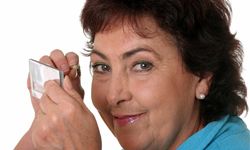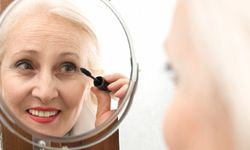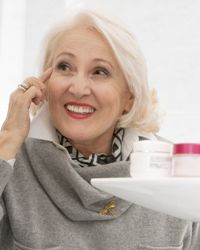Men are often deemed more attractive as their hair goes gray, but finding those first gray hairs can have a woman running for the hair dye. The key to coloring aging hair is to stay age-appropriate, because research has shown that people can accurately guess age regardless of hair color [source: Coffey]. That means that instead of going for an allover blonde that looks artificial (a common mistake made by aging women), look instead for ways to provide subtle, flattering contrast. For example, caramel lowlights would be appropriate for aging blonds, while lighter highlights can help raven-haired beauties age gracefully [source: Gluck].
Hair dye can be a contentious issue among women, so even if you're happily embracing your natural gray, that doesn't mean you're off the hook where hair care is concerned. All women face the threat of their hair becoming duller, thinner and prone to breakage over time. To counteract the sparser strands, try a volumizing shampoo and avoid styles that strain hair, including too-tight ponytails and chemical treatments. Your hair is also a barometer for what's happening in your body, so a healthy diet combined with your favorite stress relievers can do wonders for your tresses. If you're losing a lot of hair, you should see a doctor. Some conditions, such as female-pattern hair loss or alopecia, have genetic and hormonal causes.
As for the cut, aging isn't a reason to immediately chop all your hair off. The shape of your face can clue you in to a length that's workable; round faces lend themselves to shorter cuts, for instance. The volume of the strands will help narrow the style as well, as lots of layers won't work with very thin hair.




